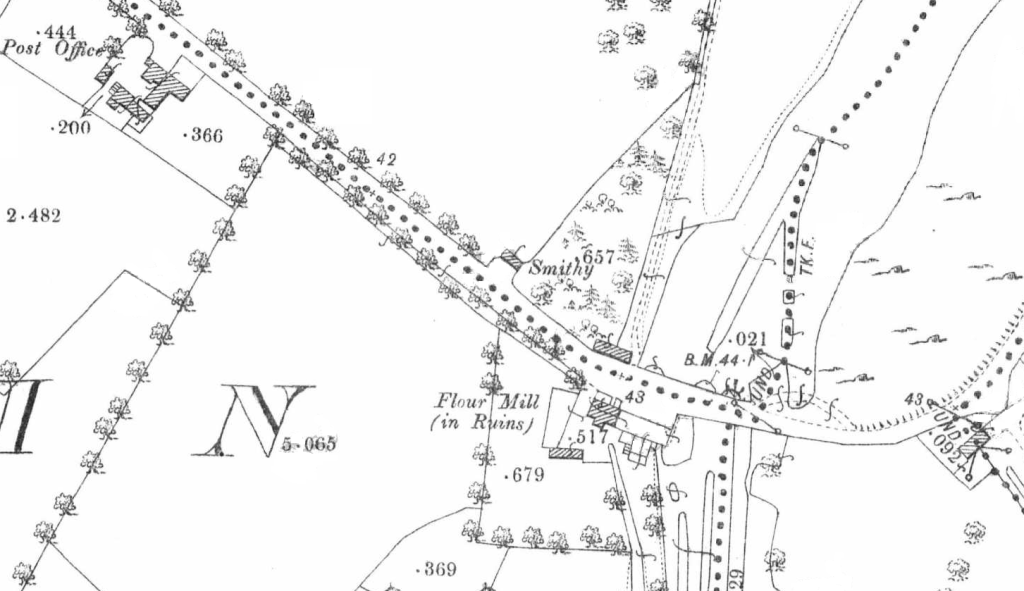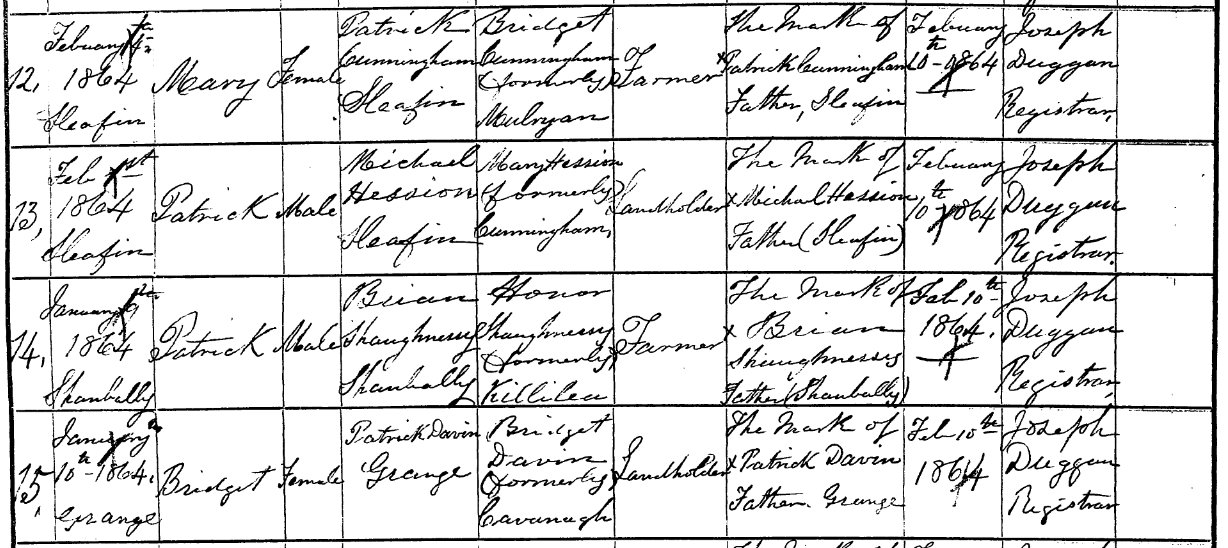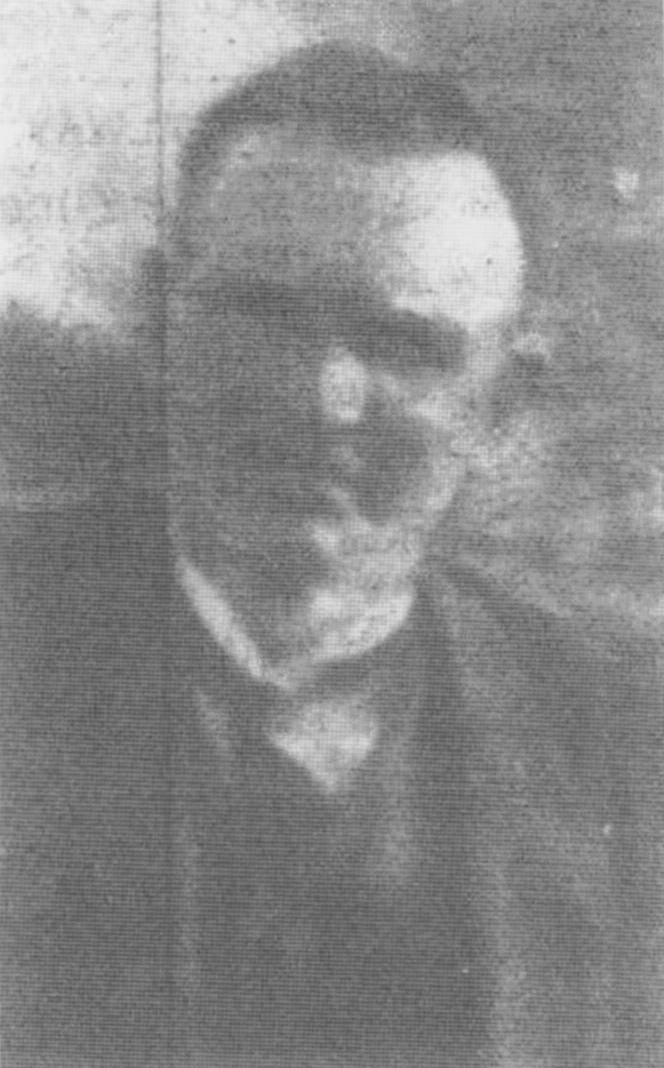By Michael Stewart
There isn’t any chestnut tree spreading over the ‘smithy’ at the end of our village, as in that poem we learned at school; but ivy, clawing its way over the walls and on to the roof, and a swath of brambles spreading across the two small shuttered windows. And children on their way home from school do not look in at the open door; for not only do they now pass swiftly by in the luxury of bus and car, the sparks do not fly off the anvil anymore, as the forge now lies derelict and obsolete, having long ceased to be of use, the blacksmith’s craft made redundant by the onset of high-powered farming and automation, and no work-horses in need of shoeing.

But it wasn’t always like this. At a time when life in the village revolved around the anvil, it was an honoured and respected place, a hive of bustle and activity – there were two smiths at one time, brothers – not only did the blacksmith forge the iron, he also practised farriery, which is said to be the greatest of all crafts.
It was an ordinary place, as forges were throughout the country, with part of the floor constructed of wood, to facilitate the shoeing of horses, and a stone trough beside the fireplace which contained water to cool the iron, which some thought to have a cure. There was an alcove beside the chimney where the blacksmith kept his special tools, for he was as versatile as he was strong; not only would he shape and balance a horse’s hoof, but also craft an ornamental road gate and adorn it with intricate designs. Even forecast the weather by studying the flame.
But to look into the forge now is to look into the past, and see men with horses, strong hardworking men, many of whom would cut an acre of oats in the day with a scythe, or of hay, which was harder still, standing to pray at the call of the chapel bell, and drink whitewater to quench their thirst, in the heat of the midsummer sun. And they could also carry heavy bags of corn on their shoulders, up to 20 stone and more, for at the time the bags of corn were very big, they stretched from one end of the cart to the other, and 5 or 6 bags made up a load. There is a story told of a farmer from the neighbourhood who took a cartload of corn to the mills in Galway, and when he arrived there were 20 carts in a queue before him. The miller, on hearing of the distance he travelled, agreed to take in his load without delay if he would carry it into the mill. So he carried the bags past the 20 carts and up the steps into the mill, and when they were placed on the weighing scales, one was found to weigh 26 stone.
The horses were mostly Irish draught, ideally suited to roadwork, as well as in the fields. Some were of the Clysdale breed, large and powerful with a white face and sometimes white fetlocks.They moved with a plodding gait, their heads leaning forward as if resigned to their fate. There was little glamour surrounding their work; far from the elegance and finery of the show arena and the adulation of an affluent crowd, their workday consisted of ploughing and tilling the soil, drawing loads of dung from the farmyard out to the fields and seaweed from the seashore. Two such specimens would be sent down from Cregg Castle to be shod, Thunderbolt and Kruger as they were known, the latter of such dimensions that a special cart had to be constructed to accommodate him. He was known to bolt with a cartload of turnips, and when the castle bell rang to announce dinner, he had to be released from the traces without delay, such was his impatience, and eagerness to reach the stables and his measure of oats.
But there was always something special about the horse; not only was one indispensable on every farm, and long before being solely used for sport and recreation, a horse was often considered a mark of prosperity, a symbol of substance. Every small farm contained at least one horse, and the farmer would often have an arrangement with his neighbour to do their farming in “co” as it was known, and have both horses work as a team, to do the heavier tasks together. The more substantial farmers would have a team of two horses, or even a pony in addition, to take the family in a trap or sidecar to the town of a Saturday, and to church on Sunday. A team of three horses would often be used in some parts of the country by intensive tillage farmers to draw large soil cultivators and heavy corn harvesters. And so the horses were well cared for, housed in the best stables, fed first crop or ryegrass hay, and the oats were free of mould. They would be clipped and brushed in springtime to prepare them for the working season, and taken regularly to the forge.
But it was more than just a forge; it was the village forum, a male sanctuary, where men would gather of a rainy day and exchange gossip in comfort, and rest their often tired or toil-worn limbs, and break the monotony of day-to-day living. And they talked of the times, small talk mostly, but then again would pronounce thoughtfully on matters of great significance which might impact their lives. There may have been an election pending, or a harsh budget which had increased the price of tobacco or drink. And it was an important meeting place, at a time when news was slow to travel; long before the advent of the mobile phone, and the proliferation of even more sophisticated communication devices, apart from the local pub, it was the only place where a farmer might learn if there was a good price to be had for his livestock at the fair, or his vegetables at the market. Some dark things, stored away and left unsaid, as they wished Godspeed to any emigrants from the locality who were setting sail to a foreign shore, or luck to some newlyweds, as they set out on life’s hazardous and uncertain road.
Or perhaps one in the neighbourhood had gone out that door called death, or was about to do so, it would be made known at the forge, where they would invoke the Lord’s mercy with reverence, and talk of their lives; how they worked and toiled, faced up to the problems that confronted them and survived the circumstances of the time. And a conclusion might be reached as to whether the world had been fair or foul, or maybe indifferent. For a few brief sombre moments they might dwell on the futility of worrying about the world, and remark fleetingly on the part played by fate in one’s destiny. But then, that was the way, and it would always be that way, as they were only visitors, wearing out their allotment of time. And not to worry if it rained on the hay or the turf wasn’t saved, they were all under sentence, and one day would come face-to-face with eternity.
Life was simple then and unhurried. Long before modern industry had made any impact, there was little employment and much poverty. Those who couldn’t find work on the land had to emigrate, and those who did had little ambition, and could rarely envisage a future beyond the farm or nearest town. There was no desire to change the world, or strive for glory beyond the local football pitch. Soon they would suffer the ravages of time, but the fields were for passing on. A man would often eat his dinner on a cold March headland, while the horses were feeding from their nosebags,or set out in the dead of night to drive cattle to the fair at Galway, maybe pulling one from a drain on the way and sometimes driving them home again unsold. Being of the land, they were imbued with a realization that their prosperity or otherwise would depend on events and happenings over which they had no control. There was the weather, and the hard knocks of nature, but above all else, the hand of God, the supreme provider, the ultimate arbiter of their fortunes.
The forge features prominently in a local account of a tragic experience in the locality at the time of the famine. It seems that a farmer who worked in his bog would call there each evening on his way home to take a rest. He had very little food, and would eat only one meal each day, which consisted of Indian meal porridge. He would have that meal in the morning, and would retire early each night to allay the pangs of hunger. It was said that he had a wish for a girl who had emigrated to America, but would never talk of her. Then one evening, when he failed to call as usual, a search was organised, and he was found dead in a field close to the road.
But then, there were many such tales of men’s endurance at the time, and women too, for there was much despair and hunger stalked the land. And it was easy to pass away, unnoticed and without acclaim, and be laid to rest in an unmarked grave. Many came to the corn mill beside the forge, frail and starving, in search of food, and to the castle nearby. There was also a soup kitchen further on in Gardenham, which was run by the Poor Clare nuns. It was approached from the north side by a steep incline, ‘Cnoc Lagar’ as it became known because those who came would be weak and weary, and often collapse on the hill as they tried to reach the kitchen. And long after this dreadful time, it was said that many who traversed this pathway would still experience a weariness and tiredness as if the travails of that period had left a lasting imprint on this hill.
They don’t come to the forge anymore, not even on Sundays, and relax on the roadside bank opposite, and while away the afternoon with banter and jollity. Where there was serenity and tranquility, congeniality and good-fellowship, as they’d laze and smoke and remember, and tell tales of bygone days: how they groped for eels in a muddy drain, or set a cradlebird on the snow. Towards evening, having roused themselves, they would erect a bob', and playpitch and toss’, and if a man was lucky, he might take home a pocketful of coppers, even the price of the porter. I still see him come over the hill, ‘Chappie’ as he was affectionately known, no longer upright and strong-boned, but now worn out and stooped, by dint of a lifetime leaning over the anvil, or bent under horses, trimming their hooves and shoeing them. He wore a large felt hat, and his pipe dangled from his mouth. He would have his hands clasped tightly behind his back to support his walk, while making his way slowly and painfully to his beloved forge, where he would open the shutters, and gaze wistfully out at the passers-by. The anvil is silent now, it doesn’t call out of a morning, announcing to the village that the blacksmith is at work, and there is a gaping hole in the roof which gets bigger with every passing storm. But the forge has witnessed a lot of history, and most of all, it is a place that has seen men come and go, as now, destined to crumble and decay, ever slowly and discreetly, it disappears into the past.

Note: This article originally appeared in our Winter 2020 Newsletter.



A brillant and true story on the “forge”. I remember my father going to the forge on the Headford Road and yes its was always a job for a wet day and the stories would be talked about when he came home (which could be 2 or 3 hours later) at the dinner table. I remember Chappy Newell used to call to visit my father, it must be on a Sunday, I was half afraid of him because he was so stooped but that was because I did not understand his stoop.